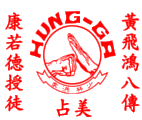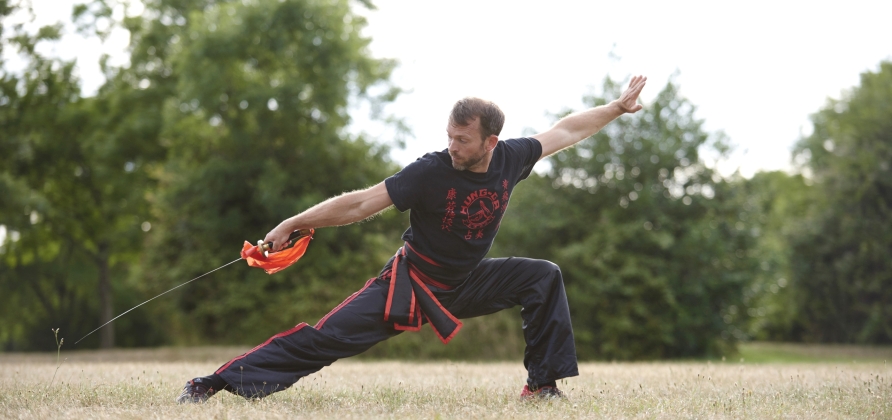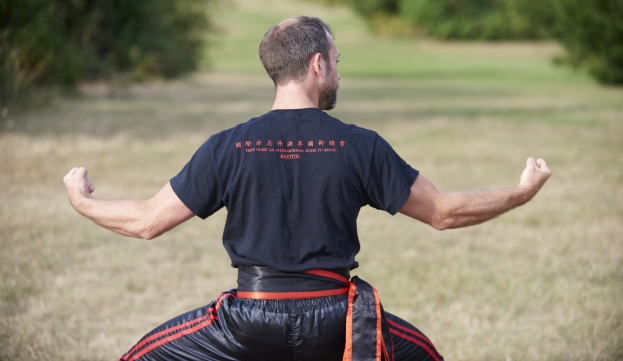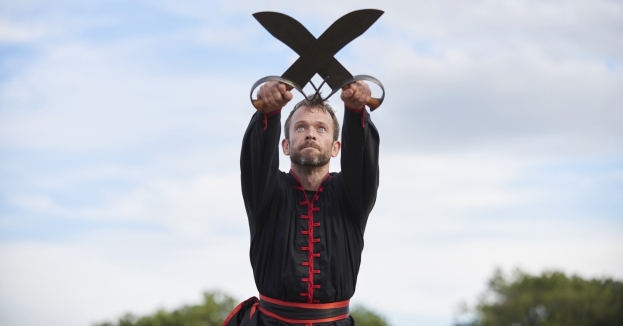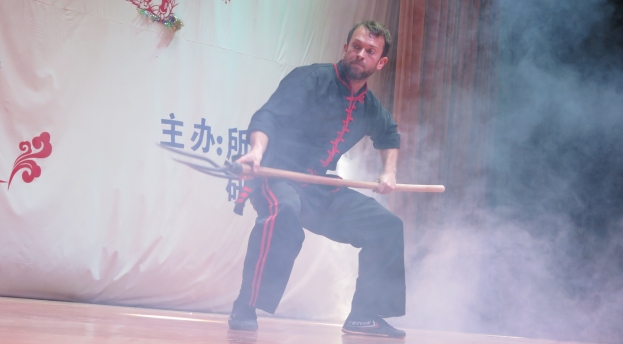Forms of Hung Ga
Gung Ji Fook Fu Kuen – 工字伏虎拳
Subduing the tiger in an 'I' pattern
The first form teaches the basic stances and techniques of Hung Ga. It develops stamina, endurance, flexibility and sets the foundation of the style. The student learns where and how to place their feet in order to move between the stances correctly and with power.
It is traditionally the first form taught in Hung Ga.
Fu Hok Seung Ying Kuen – 虎鶴雙形拳
Tiger Crane double pattern Form
The second form is the core of the entire system and the most famous form of Hung Ga. Its focus is more martial. It introduces the student to the theory of hard and soft power, represented in the form by the Tiger style’s explosive hard strikes and the Crane style’s soft whipping power. This form contains many famous sets, which can be trained independently as well, including the Ten Tiger Pattern, Five Element Fist, Drunken Style, and Ten Killing Hands.
Hang Yuet Darn Dao – 行月單刀
Flowing Moon Single Broadsword
The first weapon in the system accustoms the student to using an object as an extension of the body. The form teaches grace and agility and many techniques that can be used when fighting opponents with long range weapons, such as a pole or spear.
Seung Pao Gwan - 雙豹棍
Double Cannon Pole
The double-ended or short pole form contains many techniques and movements from the other weapon forms. It teaches the student to coordinate both arms to generate more power than a single arm will (upper-body connection) and improves the power at the waist. The ability to coordinate the upper -and lower-body movements is improved with this form, though it becomes much more developed when training the long pole.
Ng Ying Kuen – 五形拳
Five Animal Boxing
The third hand form contains most of the style’s fighting techniques and applications. All five animals are represented. The Dragon trains the mind and spirit, emphasizes the twisting of the waist for power, and makes the practitioner changeable and unpredictable. The Snake style trains the Qi, teaches striking vital points on the body and is the fastest animal at short distances. The Tiger style trains the bones and tendons, and uses its body weight, alignment and extreme fierceness for power. The Leopard style trains the strength, and uses momentum and multiple strikes to disable the opponent. Finally, the Crane style trains the sinews, and teaches grace and balance, it uses patience to wait for the right moment to strike with speed and accuracy at sensitive areas.
Ng Lung Ba Gwa Gwan – 五郎八卦棍
Fifth Brother Eight Diagram Pole
This set was famously used by Wong Fei Hung to defeat another master at a very young age. It lays the foundation of all the long-range weapons in the style. The student learns to generate great power through body connection, as movements of the upper body and lower body must be co-ordinated in order to wield the pole.
Ji Mo Seung Dao – 子母褔刀
Mother Son Double Swords
This form teaches the student to separate the action of each arm, whilst still working together (like mother and son – hence the name). They are also known as “Butterfly Knives”. It teaches threading and quick steps as the knives are very short-range: the practitioner must close the distance with the opponent very fast.
Ng Lung Ba Gwa Cheung – 五郎八卦張
Fifth Brother Eight Diagram Spear
This form is the root of the Fifth Brother Eight Diagram Pole. The weapon is lighter and faster, however, and emphasizes piercing and slashing. Known as the “King of Weapons”, the spear form incorporates techniques used in military formations as well as single individual techniques.
Chuen Choy Dai Dao – 春秋大刀
Spring Autumn Great Sword
The famous “Gwan Dao” used by General Gwan, seen on many modern day altars. This long-handled heavy weapon concentrates on large strong movements while cutting and thrusting. Practising this form strengthens the entire body.
Yu Ga Dai Pa – 瑤家大扒
Yu Family Great Fork
The Tiger Fork is a long handled trident originally used to hunt tigers. Practitioners of this weapon become unusually strong and quick, as this weapon is heavy and difficult to manoeuvre.
Tiet Sing Kuen – 鐵線拳
Iron Wire Form
The final hand form trains the internal power and teaches the student to coordinate sound, breath, movement and internal energy. Both extremes of hard and soft are exercised in order to learn to combine them in different ways, the body learns to open and close, float and sink as well greatly improving on the connection between different parts of the body (such as upper -and lower- body). The Twelve Bridges philosophy is introduced and exercised.
Ngauh Gwat Sin – 牛骨扇
Beef Bone Fan
This form was created by our Great Grandmaster Tang Fung. It utilizes close range concealed techniques, locks, and pressure point strikes to disable an armed or unarmed opponent.
Dat Mo Yit Gung Ging
Dat Mo's Muscle-Changing Classic
Not a hand form as such but a set of exercises that were brought into the style and developed further by Grandmaster Yee Chi Wai. This extremely powerful set is only taught to students that have been training for a minimum of five years, as the risk of injury is high. Through breath training and beating exercises, the whole body is conditioned, the internal system is strongly exercised and the tendons are stretched and extended.

